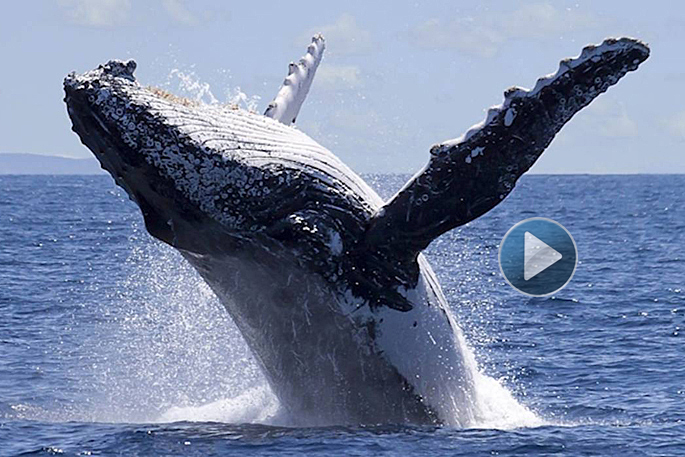A new international study has discovered paikea humpback whales stick to old migration routes despite ocean changes associated with climate change.
Understanding how organisms respond to environmental change is one of the most pressing challenges of organismal biology, according to the scientists.
In the vast oceans that cover 71 per cent of earth's surface, remote sensing technologies have created unprecedented opportunities to create new knowledge and deliver understandings of marine organism environment interactions via long-term monitoring.
Led by University of Canterbury environmental scientist Associate Professor Travis Horton, a team of scientists from the United States, New Zealand and Brazil has been tracking whales using both historic Russian whaling logs and satellite tracking.
'One of the things that we're looking at right now is solving this 3000-year-old mystery of how animals navigate,” says Travis.
'Our research on humpback whales is shedding some important light on that ancient riddle, so that's an important outcome.
'Our unique research uses more than 15 years of satellite-monitored data, including paikea humpback whale telemetry, essential oceanographic variables and magnetic field conditions, to demonstrate that humpback whales can find and follow restricted open-ocean migration routes despite changing Earth system conditions.
'We can now predict when and where whales will be located. So the patterns that we see, the reproducibility over decades of data collection, that gives us a predictive model.
'We can more or less say, with reasonable probability, these humpback whales will be in this part of the ocean at this time of the year.
'That's incredibly useful for conservation and identifying areas to protect. It's also useful for sustainable ocean science.”
Using historic whaling records and satellite-derived data, the researchers show that movement parameters associated with long-distance humpback whale migrations, including use of a south-southeast directed migratory corridor, migration path straightness, direction, timing and velocity, have not significantly changed during a period of dynamic oceanographic and geomagnetic conditions.
'These findings reveal an apparent paradox: humpback whale migrations do not change in a changing ocean,” says Travis.
'With respect to climate change, if the whales continue to keep going to the same places but those places change due to environmental or climate change, those habitats, those places that the whales are migrating to, may not be able to serve the whales' needs anymore.
'The potential here is that the climate change, combined with the fidelity that the whales show to these particular corridors, might actually hurt the whale populations. They might go to places that don't work anymore.”
Geophysical analyses of the same humpback whale movements demonstrate that these whales maintained prolonged migratory loyalty through gravitational coordinates, raising the possibility that migratory decisions are relatively insensitive to changing oceanographic and geomagnetic conditions, he says.
'Our findings highlight the importance of filling the knowledge-gaps that currently limit our ability to understand and anticipate organismal responses to rapidly changing Earth system conditions.”



0 comments
Leave a Comment
You must be logged in to make a comment.